So now it was time for the big one – climbing Ecuador’s second highest mountain and one of the world’s highest active volcanoes – Cotopaxi. With a successful summit rate of as little as 30%, we were feeling a little nervous about this one, especially as we’d not done any glacial mountaineering before. It was going to be a challenge, but one that we would give 100%, we couldn’t stand the thought of failing!
We booked the trek through Tierra Zero, based in Latacunga. At their offices they stocked us up with equipment – snow boots, crampons, ice axes, helmets, harnesses, and lots of warm clothing. What had we got ourselves in for?! On the way to the national park we picked up German Andreas and his guide Raul who would also be doing the climb, as well as Francisco who we were glad to be having as our guide again after our successful Iliniza Norte summit the day before. The refugio where we would normally have spent the night was undergoing repairs, so instead we stayed at a campsite about 40 mins drive away. We tucked into our dinner of Chinese takeaway and then tried to get some rest before we left the campsite at 11pm. The trek has to be done overnight when the ice is at its most stable, once the sun comes up it begins to melt and becomes too dangerous to climb on. If you’re not at the top by 8am you are advised to turn around for this reason – we just prayed we would make it in time.
We set up our tent and tried very hard to sleep, but forcing yourself to try and sleep at 6pm when you’re not tired is hard enough, but to do it in a tent when you’re full of excitement and nerves for the upcoming climb is near on impossible. We read for a couple of hours, then lay with our eyes closed for a couple of hours, every now and then whispering ‘are you asleep yet?’. We could hear Francisco snoring in the tent next to us, at least someone was getting some shut-eye. We, however, were to do the climb having no sleep whatsoever.
We were glad when 10pm came around and we could finally start getting ready. It was an odd sensation eating breakfast cereal at that time of night! After a couple of very strong coffees we were good to go. We left the campsite in a cloud of fog, we were sure the driver must know the roads off by heart as he sure couldn’t see a thing out of his window. At the car park there were lots of people getting ready, and we could see many head light torches on the first part of the track. We bid farewell to our driver, and then we were off.
The first hour was spent walking up an unattractive loose scree track, one of those that we love so much where you take a step forward only to fall half a step back. Shortly after we’d passed the refugio building site we reached the edge of the glacier and we stopped to put on our crampons, harnesses and helmets. Francisco tied us all together with a rope in the (hopefully) unlikely event that one of us should take a tumble off the side of the glacier.
We’d never used crampons or ice axes before, but following Francisco’s lead we soon got the hang of digging them into the ice and got into a good rhythm moving steadily up the first part of the glacier. It was tiring work and regular breaks were needed to catch our breath – also a good excuse to admire the amazing view behind us of Quito all lit up on a clear night.
The glacier started off at a relatively shallow angle but it soon increased in steepness which caused us to zigzag up. Despite our acclimatisation trek we could still feel the effects of the altitude. Talking took up too much precious oxygen, so we continued on in a silent single file, each person focusing on their own rhythm. Using the ice axe as a walking stick, we’d stab it into the ice before taking our next steps. Stab, step, step. Stab, step, step. We finally stopped for a proper break next to an impressive cave formed out of ice with beautiful stalactites precariously dangling from the ice above. Our lukewarm sugary coffee was a life saver – our camelback water containers had frozen!
We are starting to feel pretty tired by this point, so when Francisco told us we had three hours left to go we were a little apprehensive, we’d hoped we were getting near to the top but we still had a long, long way to go. We pushed on, focusing only on our own climbing rhythm, which by now had become stab, step, step, and breathe!! We climbed some very steep sections, putting all our trust into the crampons on our feet and the axe we’d dug into the ice. Our pace had slowed right down but we were still pushing forwards, the thought of reaching the top always driving us on.
Just under 1.5 hours from the summit the route levelled off slightly, despite the 60° slope we were traversing along. It took us beneath several pretty large seracs, which was quite nerve racking knowing that these are ever moving glaciers that have nowhere to go other than off a cliff. Every now and then the only thing that can happen is for sections of these seracs to brake off, causing huge ice falls. Needless to say we kept the speed up for this section. Shortly after we were greeted with the first proper view of the summit, we could see two climbing groups in front of us just making their way to the top of a very steep switch back – quite demoralising when you’re pretty much running on empty. It took all of our will power to muster up more energy.
We’d agreed beforehand that if either of us wanted to turn back then that would be ok, but up there on the side of the volcano when we’d already worked so hard it really wasn’t an option, we were going to reach the top, we had to! We think failure was not an option for Francisco either, not once did he ask if we wanted to turn back, and he even lent Karen his walking pole for the last section of the climb, which was possibly the hardest and steepest bit. If you looked up you could see just how steep and long the section was, it was best to just focus on the few steps in front of you. There were many times when we felt our bodies could not go on, but we always won the mind battle and managed to push ourselves on.
The last couple of challenging sections were a series of steps cut into the summit snow field. These really were savage, in order to get up these large steps meant you had to get a good strong fix with the ice axe followed by kicking a crampon into the ice, while praying that the foot would hold when taking a step with the other.
Finally the ground started to level off and we passed Andreas and Raul on their way down from the summit. Hearing them tell us we only had five minutes to go was the greatest thing ever, we’d never felt so exhausted but so elated at the same time. When we reached the top we’re not embarrassed to say we were a bit emotional – Scott shed a few happy tears, while Karen burst out crying and starting hugging strangers, saying ‘I’m so happy!’. Our view from the top was hidden behind a thin layer of cloud, but it didn’t detract from possibly our biggest hiking achievement.
We were so thankful to Francisco, we’re not sure we would have made it up without him – there were a few helpful tugs on the rope to get Karen up some of the steeper bits! Out of everyone we’d seen start the climb only a handful made it to the top that day, and Karen was the only senorita. It had taken us around 6.5 hours – which we were very happy with, it usually takes between 5 and 8.
We only spent a few minutes on the top before we got cold and it dawned on us that now we would have to get down. We’d used all our energy, plus our reserves and all our adrenaline getting up, there was nothing left! It was a real struggle getting down with exhausted legs, there were times that we fell down and it was so hard to get back up, but we couldn’t stop grinning – we’d done it! Now with the sun up we could see the route we’d taken, and just how beautiful yet unforgiving the surroundings were.

Can clearly see the route we took, notice the serac to the right coming very close to to the boot track
Three hours later we were back at the car and there were more hugs and congratulations with Andreas and Raul before we headed back to our camp to pack up. What an amazing experience, made even more special knowing we were one of the few groups that made it to the top. We’d really enjoyed the glacial climbing aspect and couldn’t wait to do some more. Cotopaxi had completely drained us, both physically and mentally, but it also gave us great memories, a huge sense of achievement and left us feeling pretty awesome!
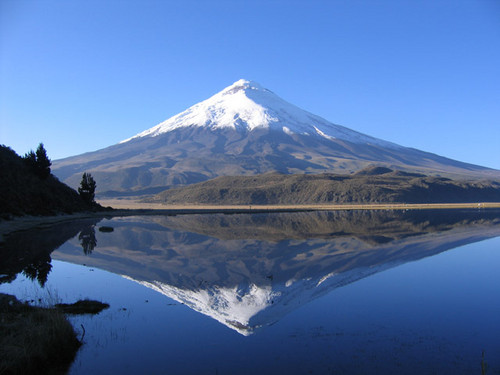
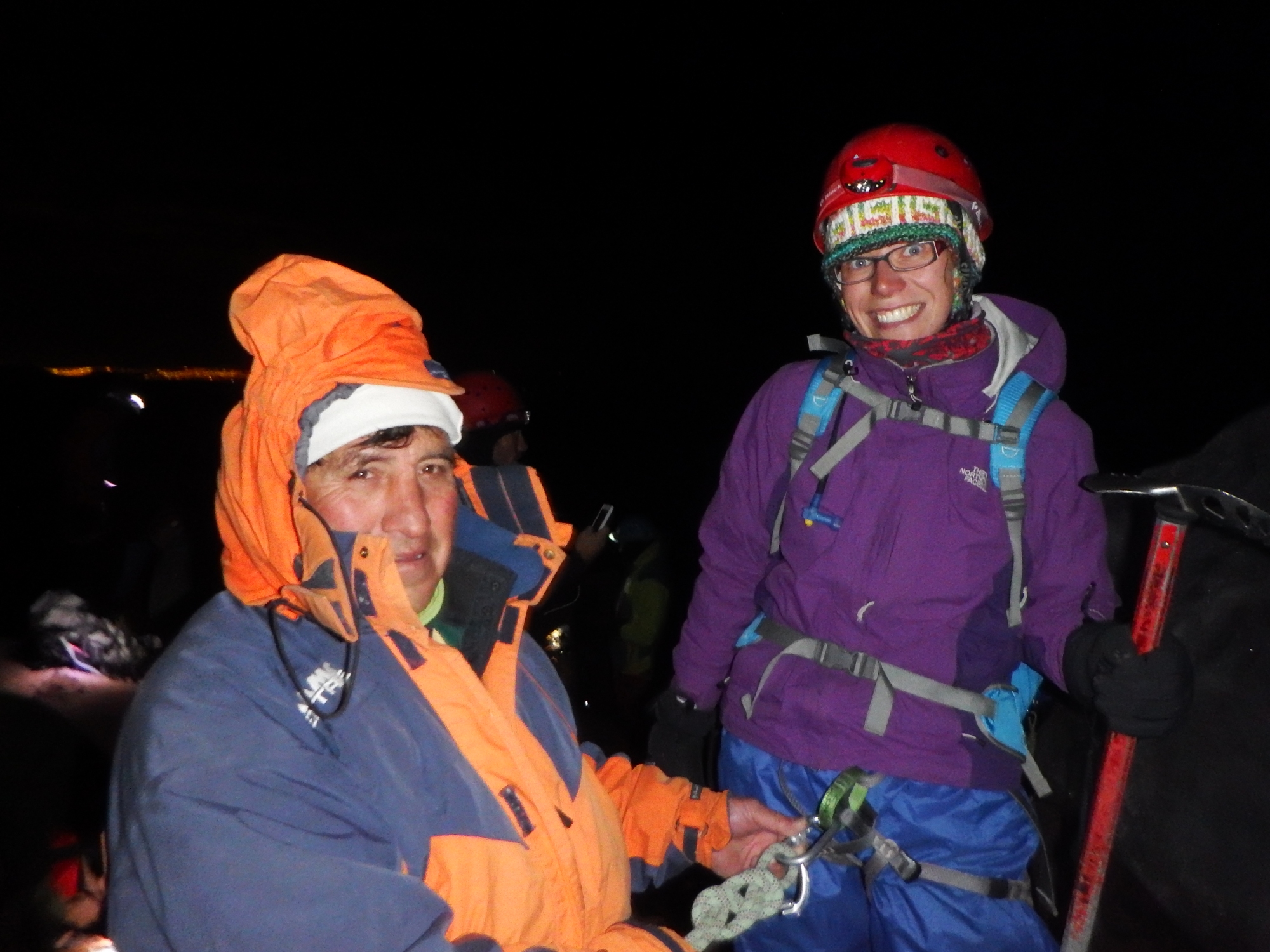
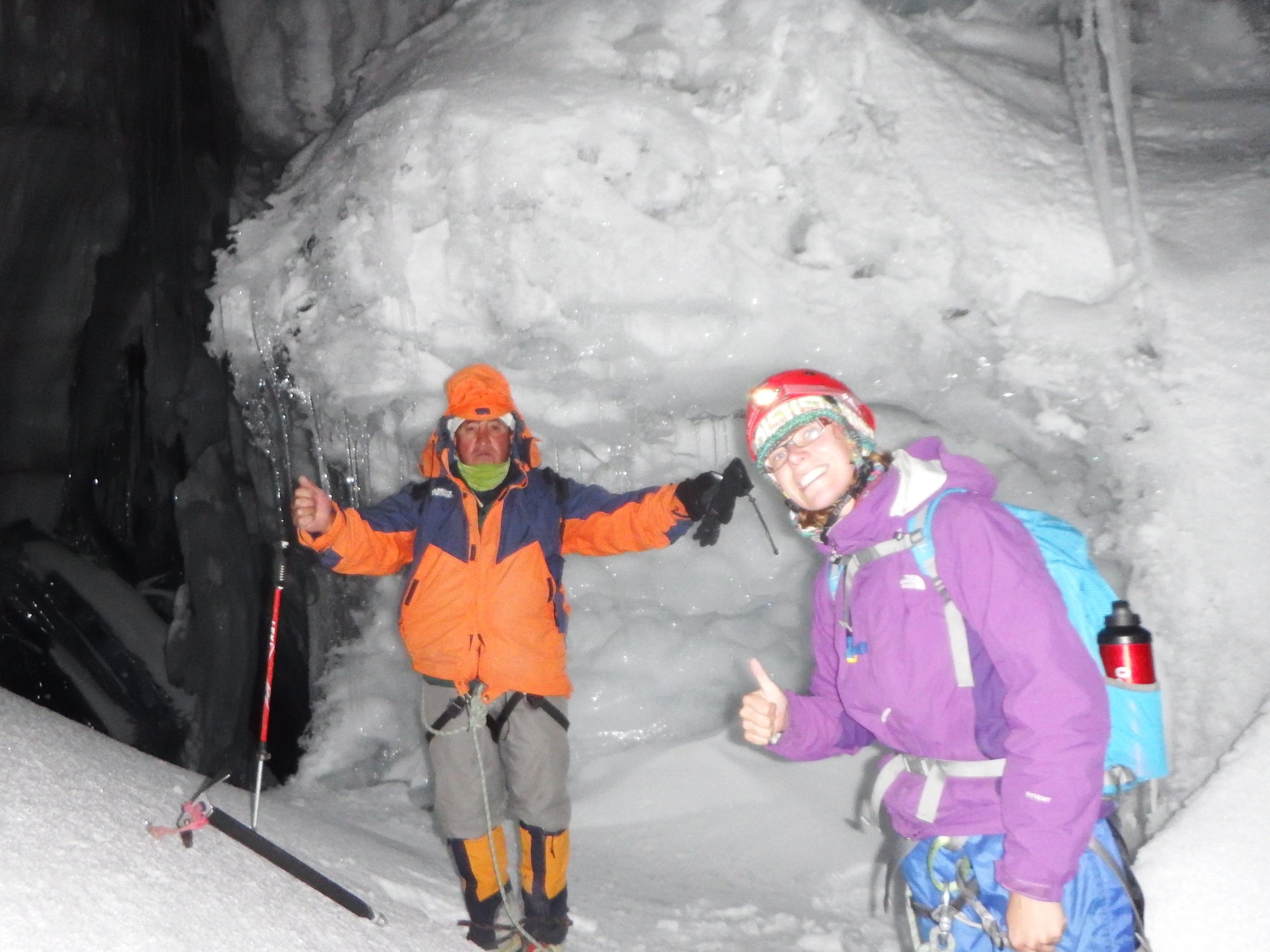

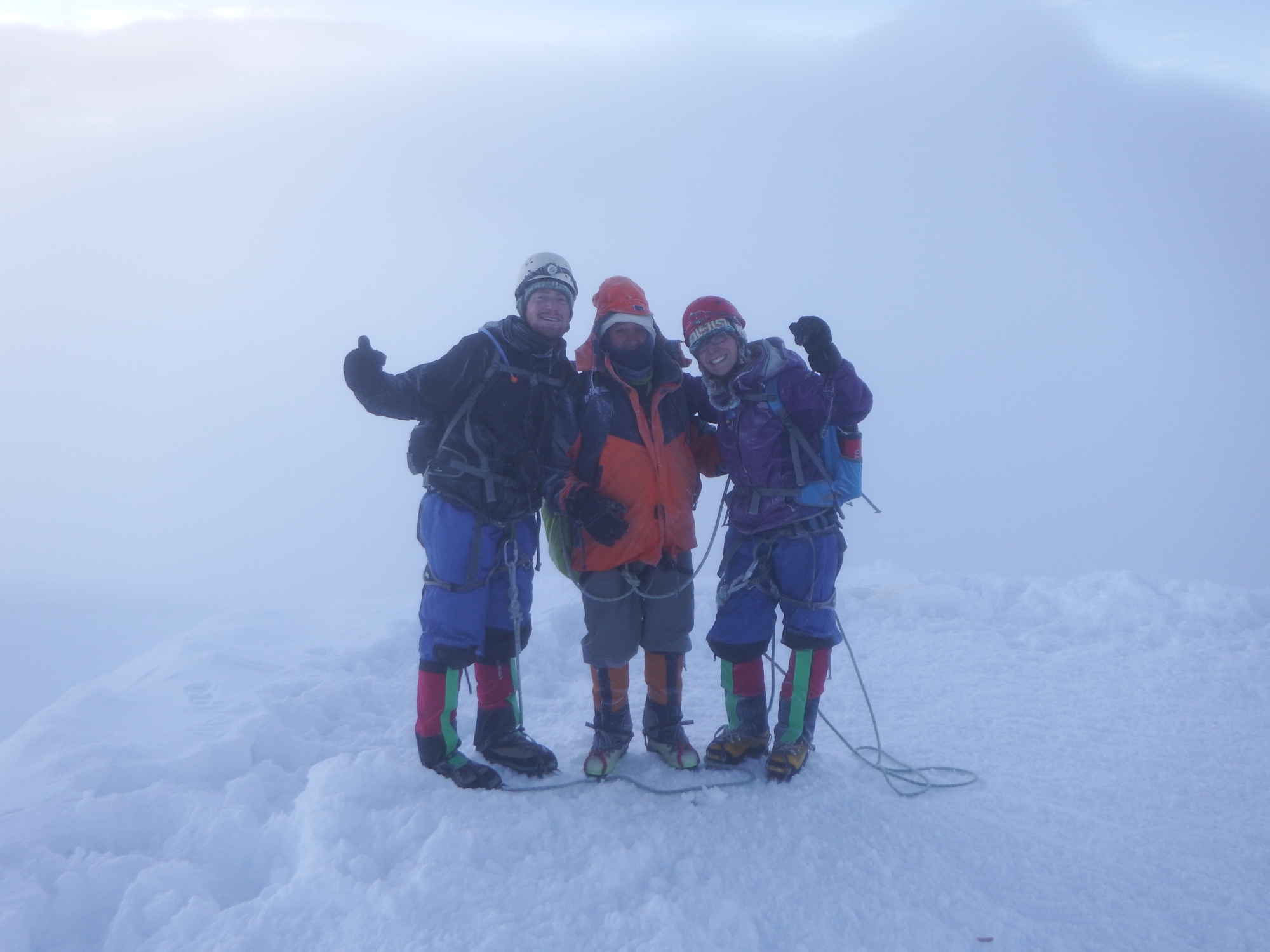
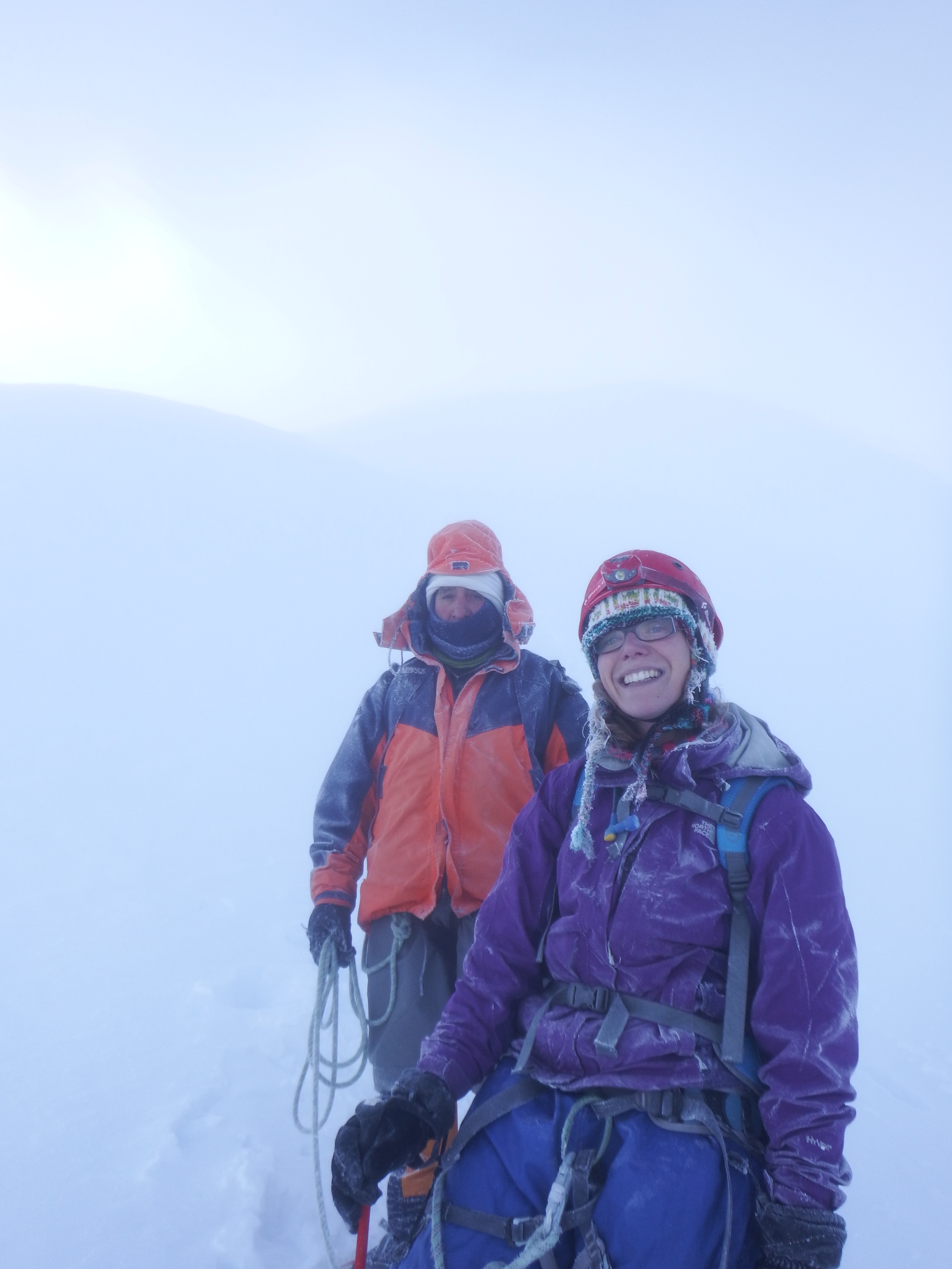
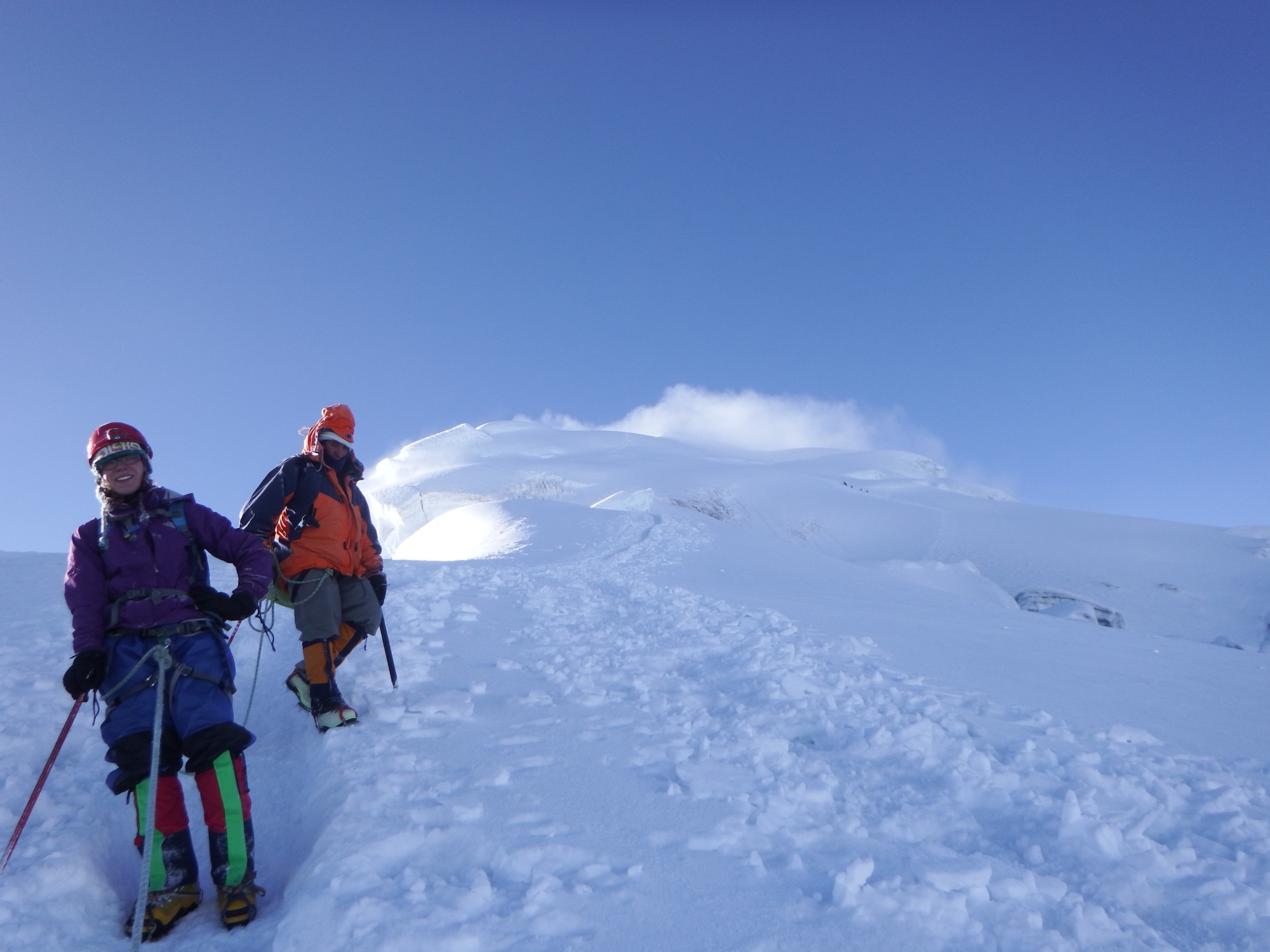
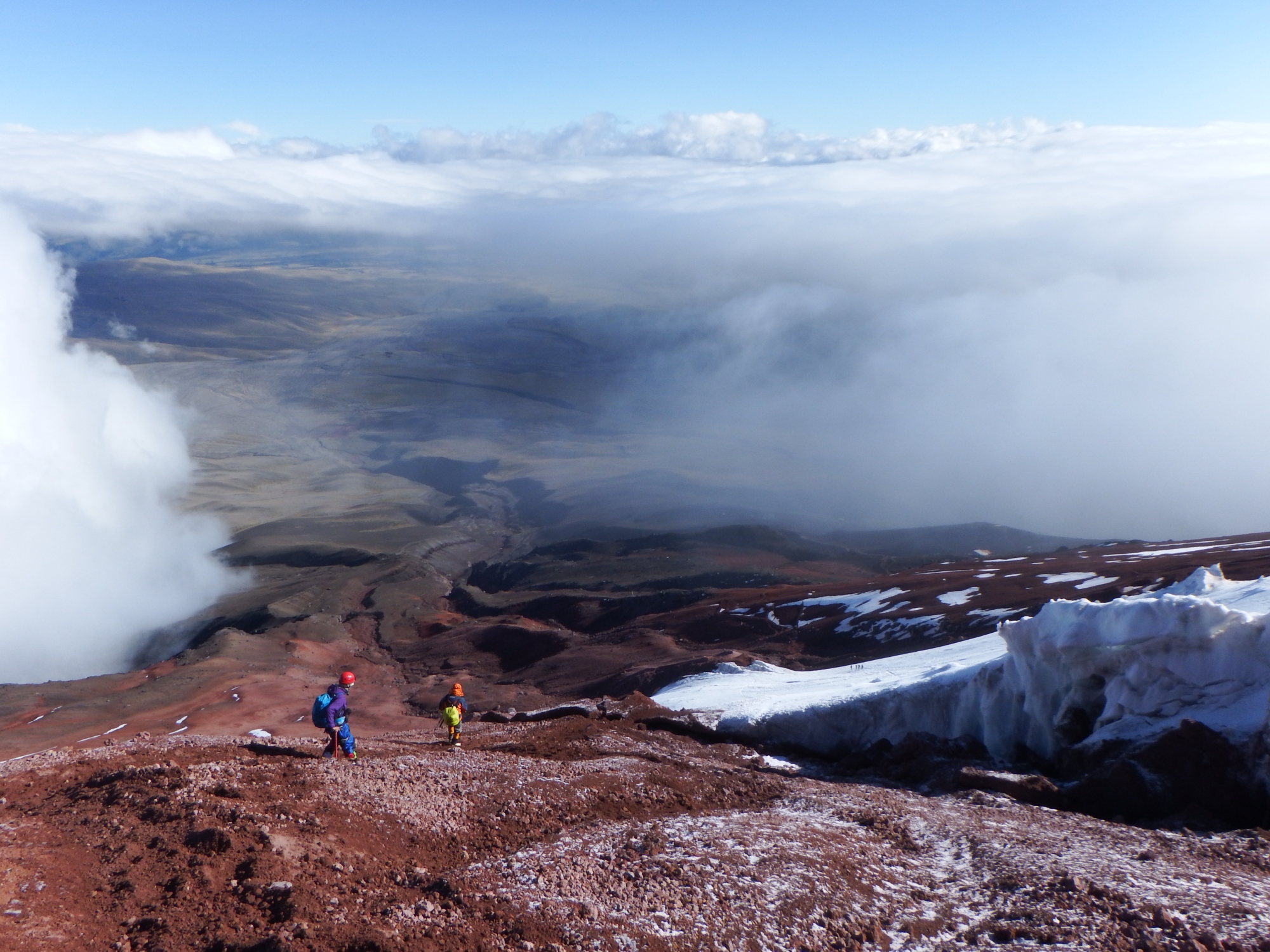
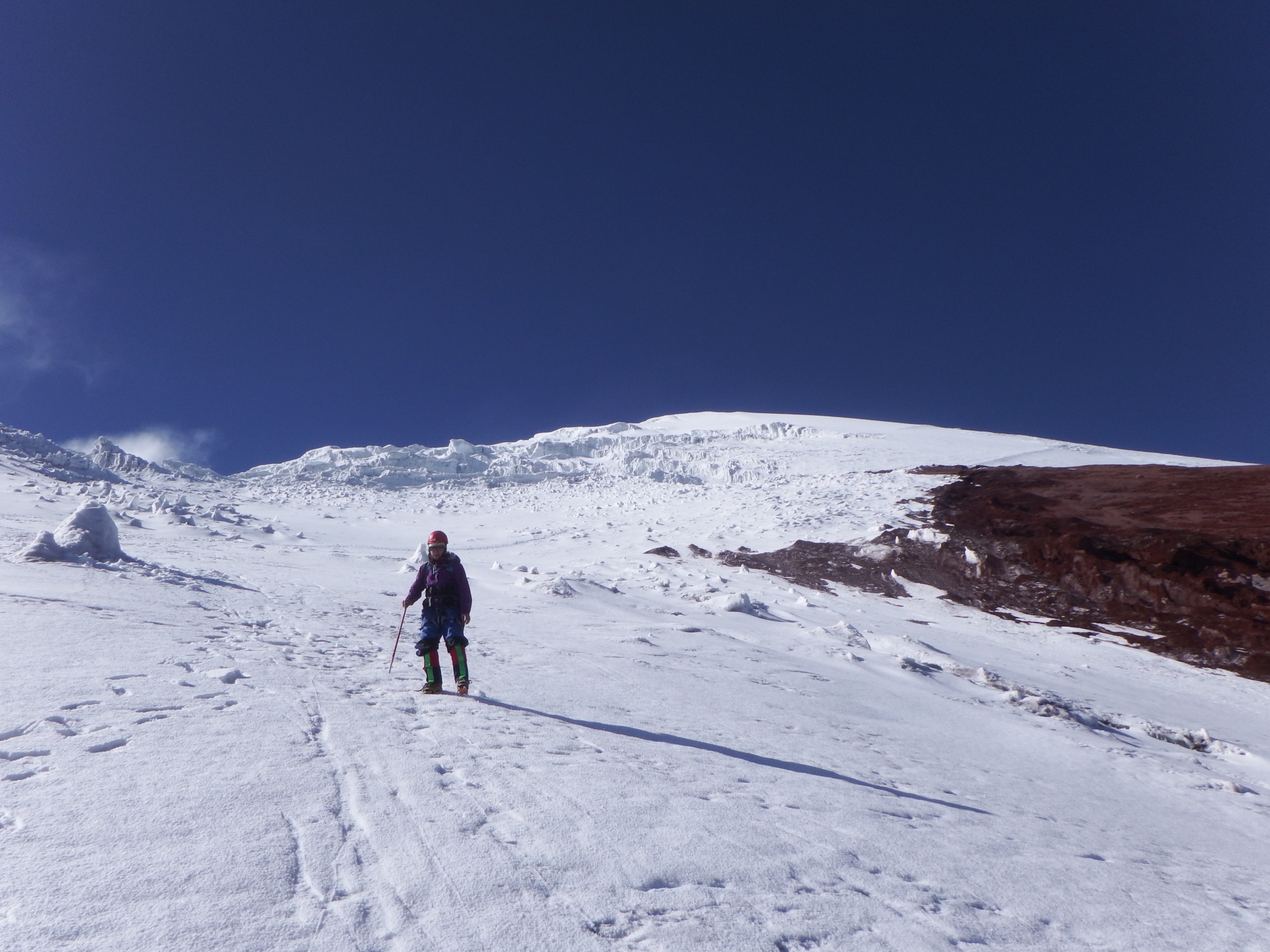
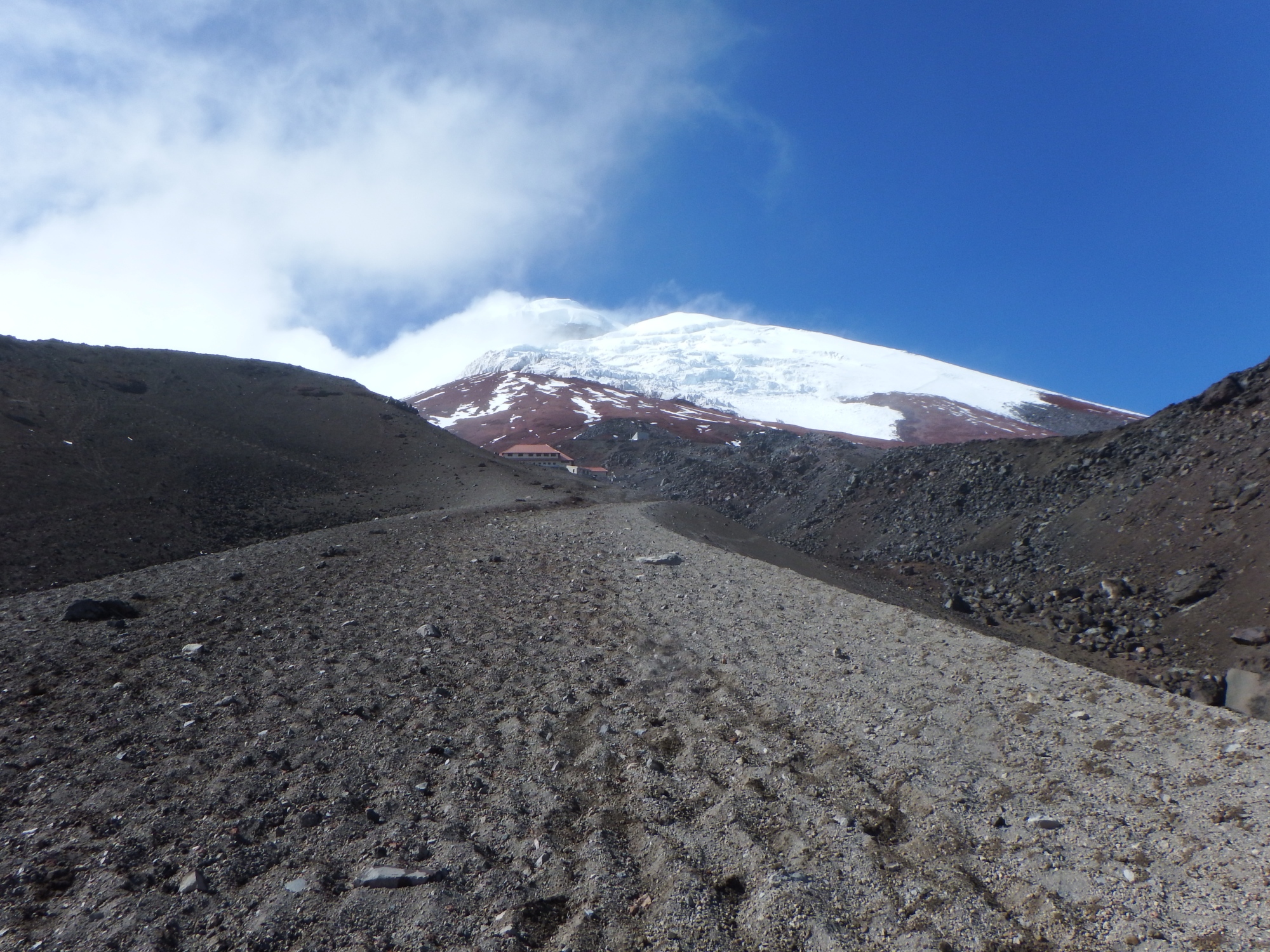
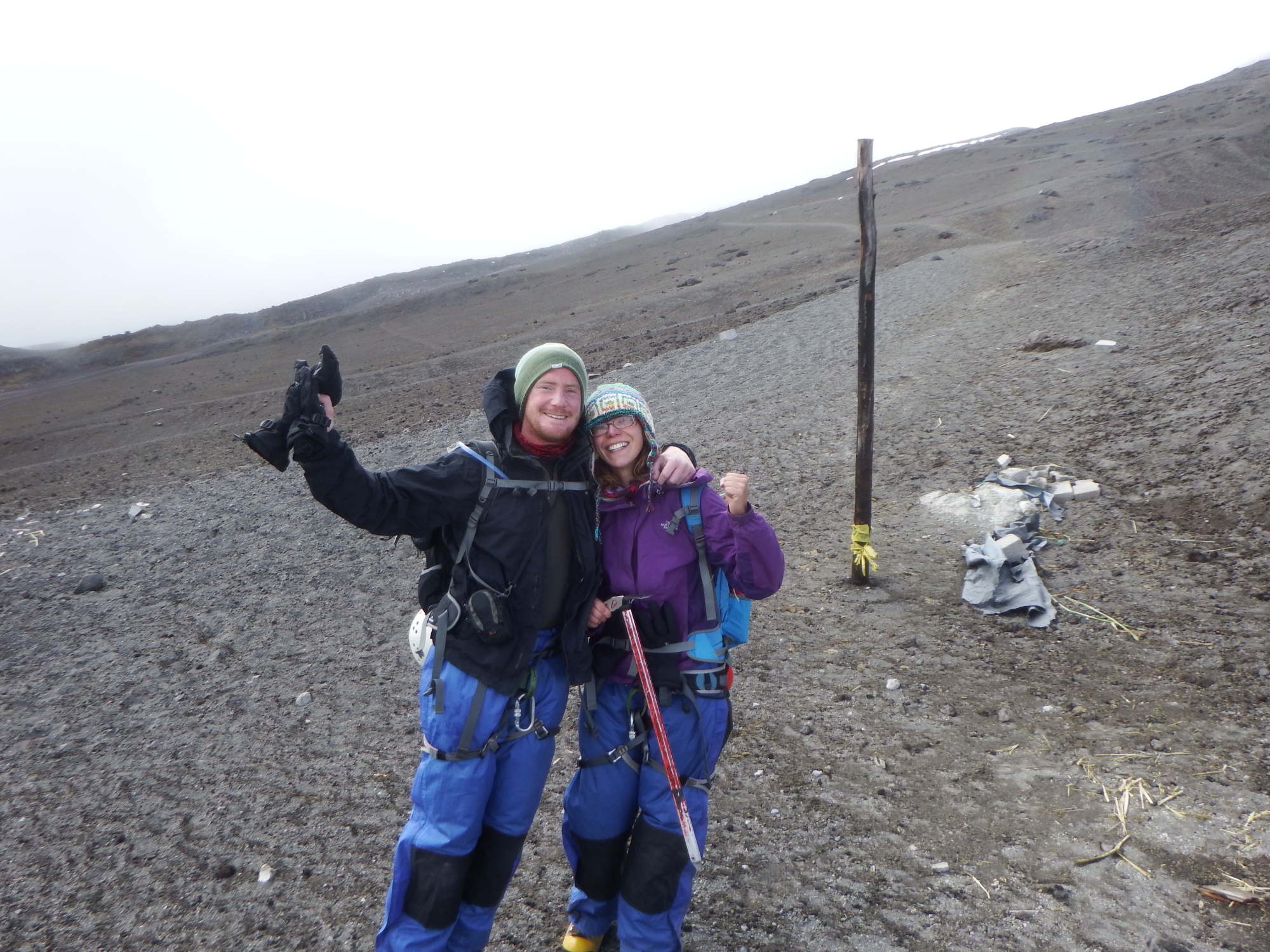



Well done! An amazing acbievement!
Loving your blog btw 🙂
Thanks Fiona, as I’m sure you can see we’re loving the mountains!! Just planning the next one, 6000m+. Glad you’re enjoying the read!!
Oh God, the horrible memories this brings back! But also, those amazing views! You are right about the way down being difficult. It’s amazing how touch going back down is when you’re already on zero energy! Congrats on making it to the top! I’m envious and impressed!
It is and was a savage challenge, still don’t know how we managed it. We’re now planning for the next one in Bolivia maybe. Thanks, we certainly can’t downplay how tough it was
Great job you two. I really enjoyed reading these blogs on the mountains. Keep well Mike x
Cheers Mike, words don’t do the beauty of it justice. Hopefully will have a go at a few more mountains once we get into Bolivia
Hi scott,
i stumbled across your blog from someone else who couldnt get to the top on cotopaxi. I noticed you guys did another mountain first. Can i ask what company you went through? we will be there in december and i’d love to give it a go. we have 10 day to acclimatise before we have spots in our itinerary to do it but i’d be really interested to hear from you about who you did it with. We will be based in quito and were looking at doing a 2 day hike stopping at refuge at approx 4000m. But do you think the one you did set you up better to be able to finish?
Ashlie, last I checked Cotopaxi is still off-limits above the refuge since the volcano is a little more alive than normal (http://www.summitpost.org/cotopaxi/150311). I’ll be there in December, too, and decided to try Chimborazo. I’m talked to a lot of guides and I’m going to do Pichincha and then Iliniza Norte before attempting Chimborazo. After researching and emailing back and forth with a lot of companies I’m currently between two: Condor Trek and Andes Trek Expeditions.